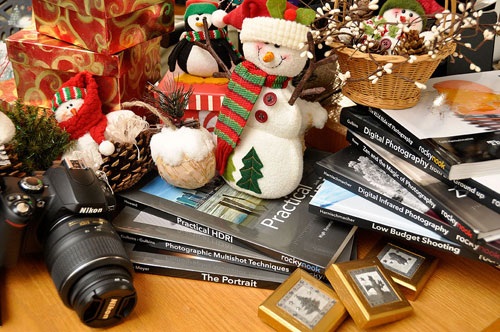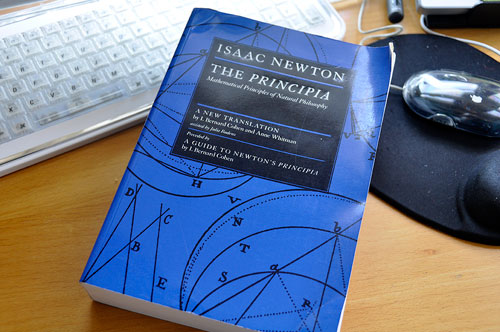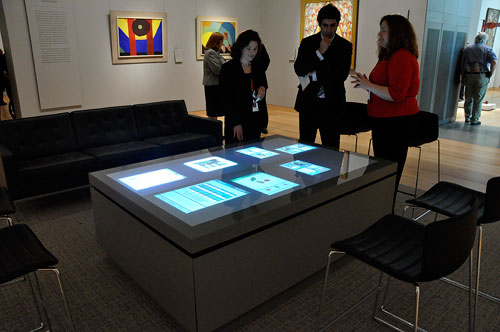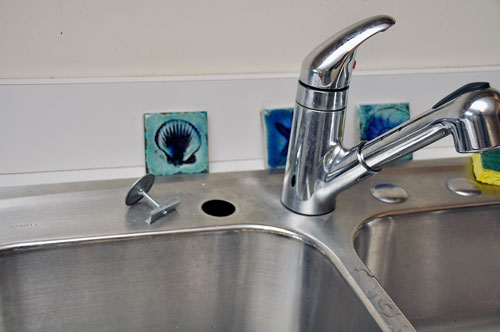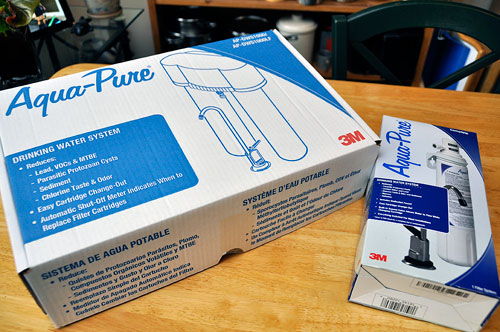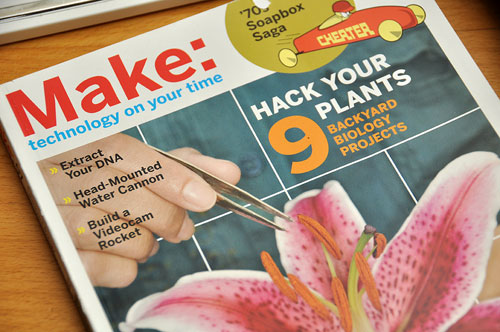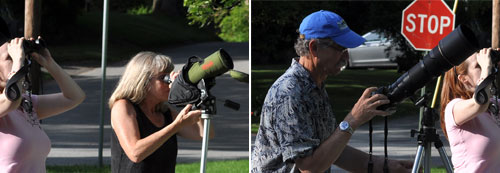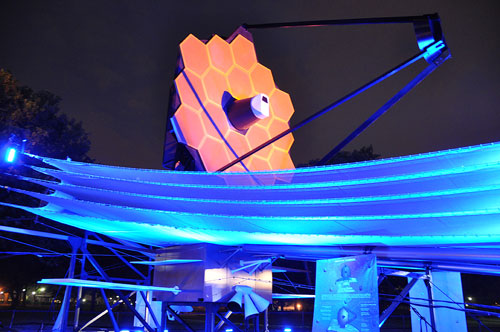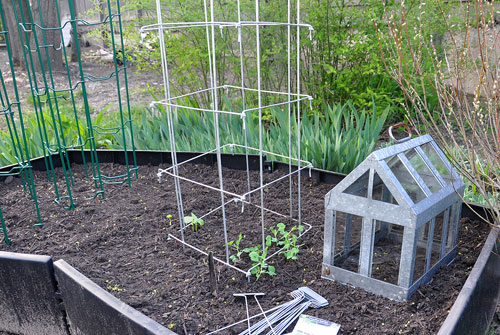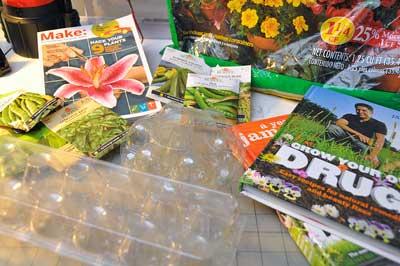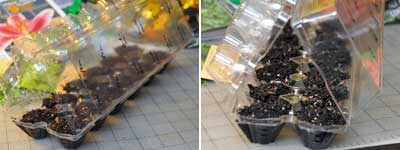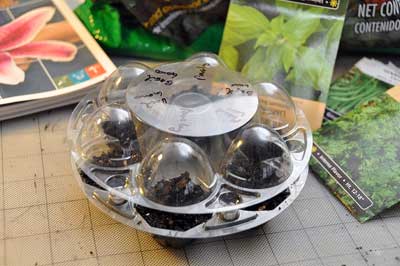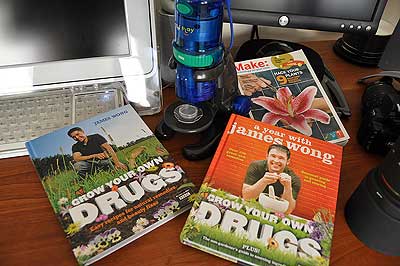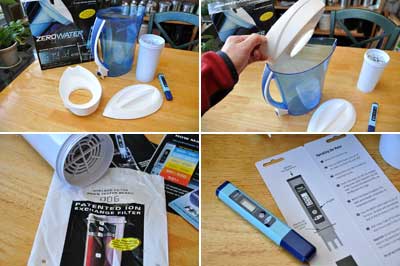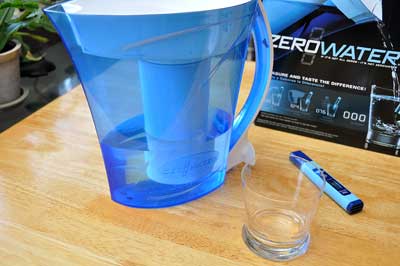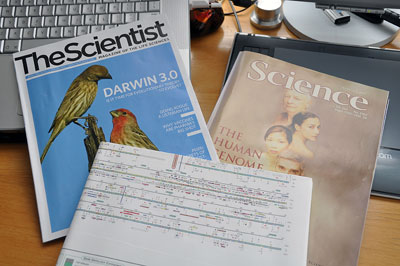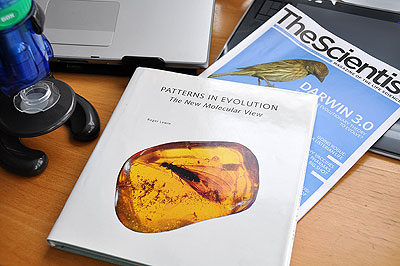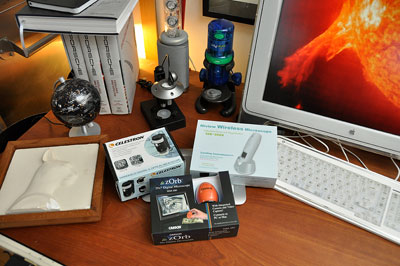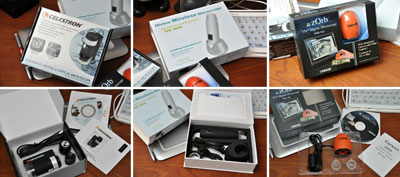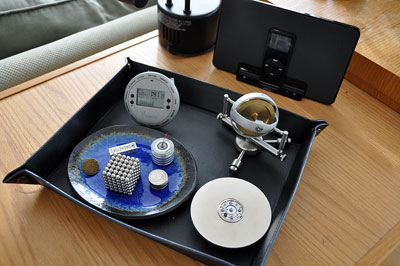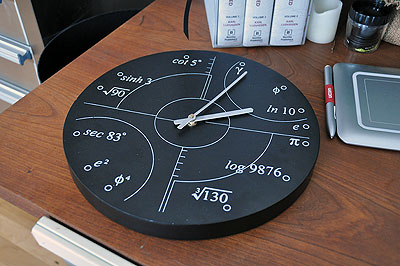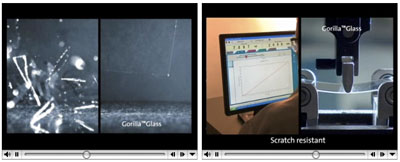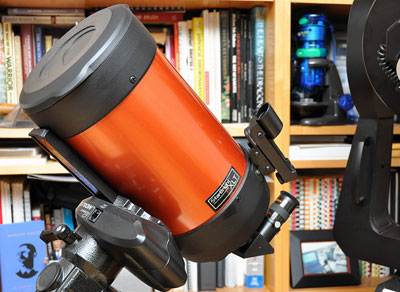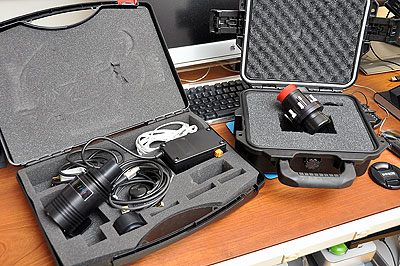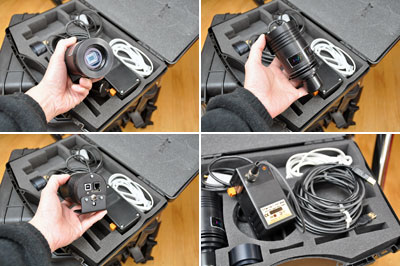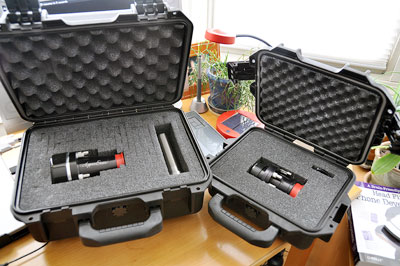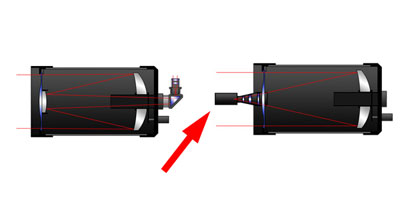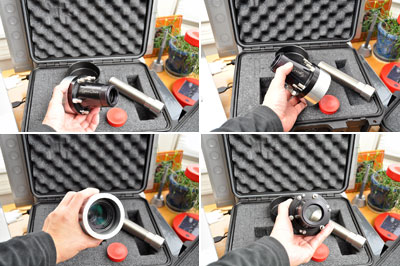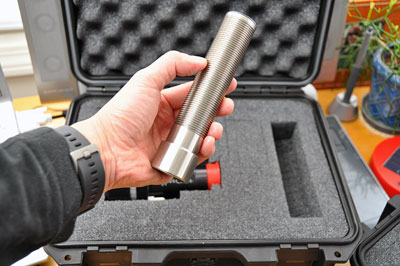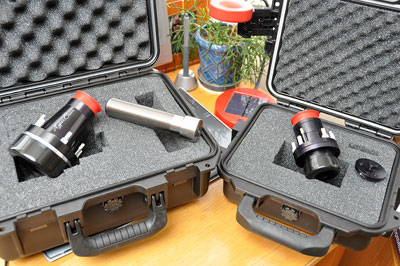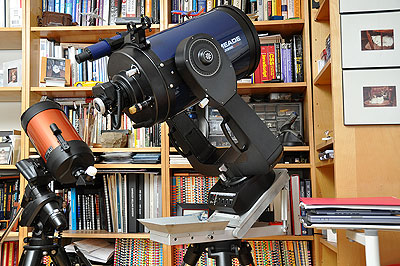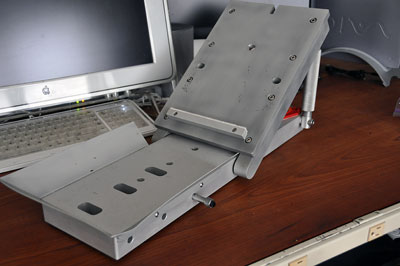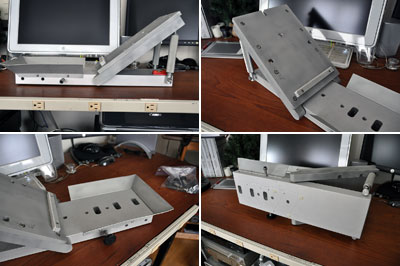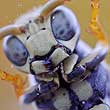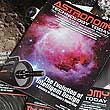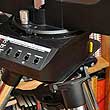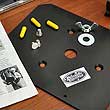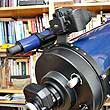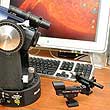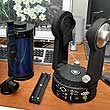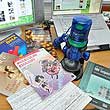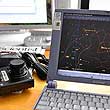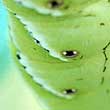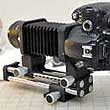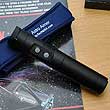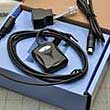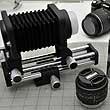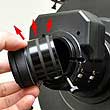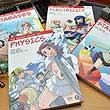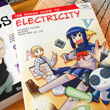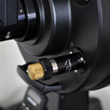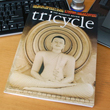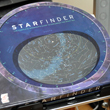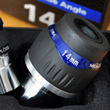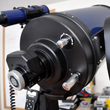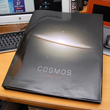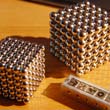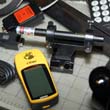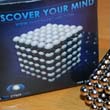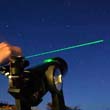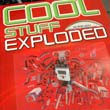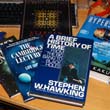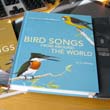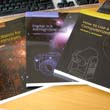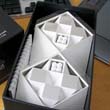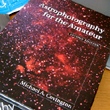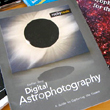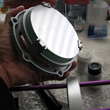
| Today |
| Reviews |
| RainyDayAstronomy |
| RainyDayBiology |
| RainyDayChemistry |
| Contact Us |
RainyDayMagazine's content can now be licensed for your print magazine or web site. Please contact us directly here. If you want to see something reviewed, then drop us a note with a link and we'll be happy to take a look. NOTE: Click here to read more about our approach to product reviews. |
| Dec 2, 2010- Rainy Day Gift Guide: Books... |
It is the start of the Holiday shopping season and we are back with our series of RainyDay Gift Guides. The first one is both the easiest and the hardest to do. It is easy because we come across so many good books every year. It is hard because we also want to mention books from previous years which we think would make awesome gifts. This year we've decide to recommend a blend. Some on the list we've mentioned before, but others are new for this year. Like all of past our suggestions, we've looked at all of our suggestions first hand. Also know this...they wouldn't be on our list if we wouldn't want them under our tree :-) For the photographer on your gift list, getting a good how-to book can be even better than getting a new lens. Whether it be mastering their Nikon D90
|
| Nov 19, 2010- Scientific Revolution... |
Sir Isaac Newton's Philosophiae Naturalis Principia Mathematica ("Mathematical Principles of Natural Philosophy"), popularly known as the Principia, is considered one of the most important works in the history of science. The Principia, wherein Newton formulated the three laws of motion and the law of universal gravitation, is the basis of modern physics and astronomy. Albert Einstein declared Principia to be "perhaps the greatest intellectual stride that it has ever been granted to any man to make." Our personal copy is a bit dog-eared because we think it makes for great bed-time reading.
Two hundred and fifty copies of the Principia were printed in 1687. Some of those first editions survived to today. Newton's personal copy (along with his notes for changes to the second edition) can be seen in the Wren Library of Trinity College, Cambridge UK. In January of 2010, Boston College acquire a first edition of the Principia. It is currently on display in the Burns Library at BC. We contacted the folks at the Burns Library and they were gracious enough to... [more]-Burns Library:Scientific Revolution Exhibit
|
| Nov 15, 2010- MFA: Museum Tech ... |
The MFA will open their new Art of the Americas wing to the public on November 20. RainyDayMagazine got a preview of the new wing last Friday. The building, the galleries, and the art were all spectacular. With Malcom Rogers at the helm of a world-class team, we would have expected nothing less. We were pleasantly surprised by all the technology sprinkled through out the new wing. The most impressive was the multi-touch table on the forth floor. It was just THERE. Some noticed it, others just walked right on by. We, of course, zero-ed in on it as soon as we saw it. We were not able to get much info on the specs regarding the technology inside the box. The multi-touch technology appears to be... [more]-MFA: Museum Tech
|
| Nov 8,2010- MOS: Reptiles Exhibit... |
The Boston Museum Of Science's new exhibit, Reptiles: The Beautiful & the Deadly opened on Sunday. RainyDayMagazine had a first hand look at the critters over the weekend and came away completely impressed. This reptile exhibition was created by Peeling Productions at Clyde Peeling's Reptiland. It is the largest traveling reptile exhibit in the world. There are live displays of deadly snakes, multi-color lizards, and strange turtles. It is a great venue for getting really up close to observe and... [more]-MOS: Reptile Exhibit
|
| Oct 18,2010 - Mandelbrot ... |
Fractals are everywhere and you don't have to be a math geek to appreciate their beauty. However, it took Benoit Mandelbrot (who WAS a serious math geek) quite a while to convince everyone that fractals (a term he coined) was a branch of mathematics worthy of serious study. Many of his contempories thought he was brilliant, but that his line of work was 1) nonsense, 2) crazy, and 3) a waste of effort. Some of Mandelbrot's seniors were out right hostile to him and his "fractals." We were first introduced to Mandelbrot and fractals in the mid-80's when we were studying computer graphics. The use of fractal geometry to create alien landscapes and worlds in movies (Star Trek II, The Last Star Fighter, etc...) got everyone buzzing about this emerging branch of mathematics. However, it wasn't until the... [more]-Mandelbrot
|
| Sep 30,2010 -AquaPure:Installation... |
Originally, we had the Aqua-Pure faucet installation scheduled for later in the month. Our plans got shuffled a bit and a slot opened up unexpectedly. Never wanting to let an opportunity to get their hands dirty pass by, the interns convinced us to move the Aqua-Pure project up the queue and get it done.
We decided to install the Aqua-Pure AP Easy because it was both the more advanced of the two systems and its appeared simpler to set up. There were three basic steps to the installation: mount the filter head, attach the cold water feed, affix the faucet. The kit was designed to minimize the tools required for installation. In fact, all we needed was a... [more]-AquaPure: Installation
|
| Sep 29,2010 -AquaPure:Water Filtration Systems... |
The "new" sink we installed in the RainyDayKitchen at the beginning of the month is working out great. Unlike the old porcelain sink, the stainless steel sink had three pre-cut openings for things like a soap, instant hot water, or a filtered-water dispenser. We had asked RainyDay readers which project would be of the most interest. The installation of an under-sink water filtration/purification system was the clear preference and the systems mentioned most often by name was Aqua-Pure by 3M. So today, we are going to take a FirstLook at the AP-DWS1000 and AP Easy from Aqua-Pure. Later in October, we'll show you how easy it is to install one of these under-sink systems. While many may recognize 3M as the maker of Scotch Tape and Post-it Notes, they are actually much bigger than just those two brands. 3M is a hugely diversified technology company with a global presence in electronic, health care, home, office, and many other sectors. With 100+ years of history and over $20B in annual sales, when 3M purchased CUNO in 2005, they acquired a company with a leadership position in water filtration and purification. CUNO's (now 3M) Aqua-Pure Water System is typically used in the kitchen to... [more]-AquaPure: FirstLook
|
| Sep 10,2010 - Homedics Restore FirstLook... |
At the start of the Summer, we gave a quick mention to an interesting water filtering system named Restore from HoMedics. This water-purification pitcher uses an activated-carbon filter similar to many others on the market. However, they have one notable feature not available in any other system, a built-in germ-killing UV light source. Today, we'll take a RainyDay FirstLook at the HoMedics Restore system. The HoMedics Restore clean water system is made up of a few simple elegant parts: 8-cup pitcher, filter, lid, AC adapter. The pitcher is visually appealing, feels substantial but not too heavy. The handle is rubberized and very comfortable to grip. At the base of the handle is a switch for the two modes: Purify, and Fill. The pitcher is bottom-heavy as the circuitry for powering the UV bulb is in the base of the unit. There are two steps to the Homedics Restore process: activated-carbon filtration, and UV light sterilization. Water to be treated goes into the... [more]-Homedics Restore: FirstLook
|
| July 21,2010 - Water water everywhere... |
Most folks in the US don't think about the quality of the water they get when they turn on the tap. Drinkable water from the faucet is expected. Earlier this Spring, a huge pipe which brings clean water into Boston burst and plunged the city into a water emergency. For a few days, residents had to pay a little more attention to their water. As it turned out, the water supply was fine and no one was really at risk during that period. However, we did field a bunch of questions about water filtration and the like. As the weather now hovers in the 90's more often than not, we thought it timely to talk a little about proper hydration and water-related topics. While the water from the tap is usually very clean, it might not be very tasty. Sometimes it is because the pipes are rusty. Other times it may be due to the clorination or other processing residues. None of it is particularly harmful, but it can alter the "character" of the water. For great tasting water, running it through activated charcoal will usually take out any odor or odd taste. One convenient way to... [more]-Water water everywhere...
|
| June 28,2010 - Backyard Biotech: Microscopes ... |
Back in the beginning of the year, we started a new topic called Backyard Biotech for the RainyDayScience section of the magazine. The interns did some research and quickly realized there was a growing movement of DIYBio enthusiasts on the Net. This is a group of DIYers, tinkerers, and curious individuals (very similar to the early days of computer hackers) interested in playing around with DNA, building thermocyclers, hacking the genome. So, for the better part of this week, we'll be showing you what we've learned, what we would like to do, and where we are going with this.
One of the interns' tasks was to come up with a list of projects. The #7 issue of MAKE magazine made their task ridiculously easy. The first thing before doing anything else is to build a lab, and the first piece of equipment for any biotech lab is a microscope. OK, maybe the first thing is a decent workbench, but we already have one...so we started with the microscope. We have looked at digital microscopes (QX5, Brando) before, but we wanted a unit small enough for the... [more] -Backyard Biotech: Microscopes
|
| June 23,2010 - Bird watching ... |
Bird watching is a great way to spend a day. It is also a great way to justify the purchase of those REALLY big telephoto and zoom lenses to the accounting department. Our friends Andrew and Candace told us about a heron rookery out on an island just off Manchester-by-the-Sea and asked if we would care to join them in checking it out. Looking for any excuse to get out of the office, we didn't have to be asked twice.
On the way to the rookery, we stopped off in Hamilton to get a peek at some hawk hatchlings which were big enough to venture from the nest, but had not yet taken flight. It was a good opportunity to practice with our equipment, try a few body/lens combinations, and see if we needed the TrekPod or not.
The image of the hawk on the left was taken with a D90 and the Sigma 80-400mm lens without the aid of a tripod. The one on the right was taken by Andy using his D700 and the Nikon 200-400mm on a tripod. The difference was pretty striking once we had a chance to take a closer look at the... [more] -Bird watching
|
| June 08,2010 - Vanderbilt Museum ... |
We were down in NYC last weekend for the World Science Festival. The 90º temperature in the city had us looking for cooler diversions on Saturday. After a bit of searching, we came up with the Vanderbilt Museum in Centerport, Long Island. It was less than an hour's drive from NYC, and 43 acres of rolling hills was a nice escape from the "concrete jungle." This museum was built by Willian K. Vanderbilt II on his Eagle's Nest Estate. The 24-room Spanish-Revival mansion was built in three stages off and on from 1900s to 1930s. We did not have time to take the house tour or see all of the grounds on this visit, but managed to hit many of the museums and some of the gardens.
As a person of means, William Vanderbilt II (he was the great-grandson of Cornelius Vanderbilt) fed his curiousity of natural history by mounting specimen-collecting voyages to the Galapagos and other exotic destinations. He opened his personal museum to the public in 1922. The photos here are just a small sample of the artifacts from his extensive travels and expeditions. On display were an impressive and varied array of... [more] -Vanderbilt Museum
|
| June 07,2010 - World Science Festival... |
A full-scale model of the world’s most powerful space telescope was in New York City last week as part of the World Science Festival. NASA’s James Webb Space Telescope, when launched in 2014, will allow scientists to "see" the very first galaxies formed in the Universe and discover hidden worlds around distant stars. For the past six days, a full-scale model of this successor to the Hubble Space Telescope was on public view in Battery Park, on the tip of Manhattan. It was as close to a first-hand look at the telescope as most people will ever get, so on Friday we drove down for a gander. In addition, we drove down because we didn't want to miss the “From the City to the Stars” party. The anchor of the event was the spectacularly lit Webb telescope model. Leading scientists were on hand to talk to everyone about the design of the telescope, the challenges, and the anticipated discoveries. The James Webb Space Telescope is the next-generation space observatory, exploring deep space phenomena from distant galaxies to nearby planets and stars. The telescope will give scientists clues about the... [more] -World Science Festival 2010
|
| May 3,2010- MSR MIOX water purifier... |
Lack of clean water is a reality for one out of every six people living today. In some parts of the world, half the population does not have access to safe drinking water. In the United States, the U.S. Environmental Protection Agency (EPA) sets the allowable level of certain contaminants in tap water provided by public water systems. Contaminants in untreated water may include microorganisms such as viruses and bacteria. Clean water was a sought-after commodity in Boston this weekend. A massive underground pipe rupture which left two million residents without drinking water was a blunt reminder of something most of us take for granted but which many in the world go without everyday. The official city-wide warning went out Saturday afternoon. Boston and 30 surrounding municipalities instructed their residents to boil all water before drinking. This "boil order" was issued because the backup water supply quality was comparable to "untreated pond water," acceptable for bathing and flushing toilets, but not for drinking or cooking. Fortunately, making water clean enough for drinking was not difficult for us, as we have the MSR MIOX purifier in house. The MIOX will kill much of the harmful biological contaminants in less than 30 minutes: viruses in 15, bacteria in 15, protozoa in 30, and cryptosporidiumin four hours. It does this by creating an oxidant solution which is then poured into the water to destroy any... [more] -MSR MIOX Purifier
|
| April 23,2010- Planting tomatoes in April... |
| One of the advantages of a raised-bed garden is that the above-ground soil has an opportunity to heat up during the day. The warmer soil allows vegetables to be planted earlier than would be possible otherwise. We sprouted beans in March and planted them on April 8th. They have been in the ground a few weeks now, have clearly established themselves, and have begun sending out climbers. This encouraged us to think about getting some tomatoes and other plants into the GrowBed.
April 13th was another above-65º day. We didn't have much on our schedule and thought it would be a good time to make a Home Depot run. Fortunately for us, it was also the day of their first delivery of vegetable plants from their supplier. We had "first pick" of plants as they were being unloaded from the truck onto the shelf. Home Depot's supplier is Bonnie Plants of Union Springs Al. All of the seedlings looked vigorous and were... [more] -Planting tomatoes in April
|
| March 25,2010 |
Starting plants from seeds is a satisfying part of setting up a garden. There are many ways to do it. The basic requirements are some soil, a container, a warm bright spot, and the seeds. The only care needed is to keep the seeds moist until they germinate. Egg cartons made from fiber are readily available and biodegradable and free (once you have purchased the eggs), which makes them the container of choice for many seed-starting projects. However, fiber egg cartons will both absorb water and leak all over if not placed on a tray. Fortunately, some egg sellers have upgraded to newer technology and now ship their eggs in clear plastic cartons.
These are perfect for starting seedlings, as the clear cover serves as a mini-greenhouse to keep the soil moist and warm. An obvious benefit of a plastic container is they don't need a drain tray. Stacking and moving them around is much easier. Labeling of what was planted can be done directly on the cover. Some have a built-in gap to allow for air circulation, others have two covers which can be used to prop itself open to encourage air flow.
The seeds have been planted. The containers will sit at a south-facing window, checked daily, until they germinate. We'll have photos of the growth and progress of this effort over the next few week. [Permalink] -Seeds and Starters
|
| March 24,2010 |
We are thrilled with the signing of the landmark healthcare reform bill yesterday. The fight was brutal and those opposed to the new law are still actively seeking to hinder it in any way possible. We would like to ask...did any of the following pass without opposition?
Who would stand against these today? Regardless of how people feel about the new law, staying healthy is probably one of the items on most people's top-ten list. There are many ways to approach that goal: eat properly, exercise appropriately, and have regular medical checkups. When we do get sick, today's pharmaceuticals have a cure for many of the the things that in previous genenerations would have caused our demise. There are also things we can do for ourselves when we have some of the more common conditions like acne, anxiety, cold sores, and general aches and pains. Herbs and plants have been used for thousands of years to treat common ailments. The common view is that plant-based remedies are natural, inexpensive, and less harmful to the body than manufactured drugs. Plants have provided Western medicine with some of its most effective drugs: penicillin, morphine, aspirin. Of course, there are plenty of plant-based "treatments" that are poisonous, do not do much of anything, or are just plain useless. The same can be said of some pharmaceuticals. The key is knowledge of what is effective and why.
James Wong, a 27-year-old ethnobotanist, believes that safe, natural remedies can be made from the everyday plants we can grow in our own garden. Grow Your Own Drugs: Easy recipes for natural remedies and beauty fixes, is a book which shows how we can grow, make preparations, and use plants to soothe the symtoms of everyday ailments the natural way.
The second book, A Year With James Wong, has 100 new remedies, a seasonal guide and planner, and foraging tips. The planner takes the reader through from Spring to Winter, advising on what and when to plant, the best time to harvest, and how to create a mini-apothecary at home.
Both books (GYOD, GYOD+) help interested readers navigate the old wives' tales, look beyond the aesthetics, and to see plants as sources of medicine. The books are informative, beautifully photographed, and are wonderful additions to any library. We will try many of the recipes, adding some of the plants to our garden, and report back on how they perform as part of our Backyard Biotech series. [Permalink] -Grow Your Own Drugs
|
| March 17,2010 |
The average human body is about 70% water. Water is so central to our well being that while a person can live for a few weeks without food, a person can't survive more than a few days without water. Having access to clean water is something many of us take for granted. The water that comes out of the tap is perfectly fine, but there is an easy way to make it almost perfect. There are dozens of water filters out in the market. Unlike conventional gravity-fed water filters, ZeroWater's 5-stage ion-exchange filter is designed to remove everything from the water but the water. The ZeroWater package comes complete with everything needed: dual access pitcher, filtering reservoir, lid, and 5-stage filter.
ZeroWater is so confident in their product that they include a laboratory-calibrated water tester in the package. Total Dissolved Solids (TDS) is a measure of the amount of dissolved substances (in parts per million) in the water. How hard the ZeroWater filter will have to work depends on the quality of the water (level of TDS) being used.
Assembing the filter is a straightforward process. The filter screws into the reservoir from the bottom. There is an integrated silicon 0-ring in the filter for a water-tight seal. Once assembled, the unit is lowered into the pitcher and ready for use.
To use, fill the reservoir with cold tap water and let the filter do its thing. The rate of filtering is automatic. It took about 4 minutes (with a new filter) to filter one full reservoir of water. The filtered water may be poured from the pitcher spout on the top or from the bottom via the push-button spout. Now that we have some ZeroWater, we plan to give that probe a workout. In our FirstUse write-up we'll see how it compares to: the Pur filter we have been using on the kitchen faucet; a few different brands of bottled water; and Boston's own tap water. It could be quite an eye-opener! [Permalink] -ZeroWater FirstLook
|
| March 14,2010 |
Today is Pi day...so here it is to 1,000,000 digits: 3.14159265358979323846264338327950288419716939937510582 097494459230781640628620899862803482534211706798214808 651328230664709384460955058223172535940812848111745028 410270193852110555964462294895493038196442881097566593 344612847564823378678316527120190914564856692346034861 045432664821339360726024914127372458700660631558817488 152092096282925409171536436789259036001133053054882046 652138414695194151160943305727036575959195309218611738 193261179310511854807446237996274956735188575272489122 793818301194912983367336244065664308602139494639522473 719070217986094370277053921717629317675238467481846766 940513200056812714526356082778577134275778960917363717 872146844090... [more] -Pi Day
|
| March 1,2010 |
One of our monthly readings is a magazine call The Scientist. We read it because it is a way for us to keep up with what's happening in the life sciences without having to wade through the heavy stuff in Science. The cover article of the first issue of 2010 was about whether it was time to update some of the current thinking in Evolutionary Theory.
We found the article in The Scientist absolutely fascinating, as we had not seen a summary of the various extensions to the Julian Huxley's 1942 book Evolution: The Modern Synthesis The item which sparked today's article was a line in Richard Gallagher's list of the problems with the study of the life sciences today. The ten problems as seen by the departing editor were all on-target, especially item no.9.
The Creationist crackpots have been trying to discredit Evolutionary Theory for quite awhile now. Stupid ideas have their own energy and momentum. Sometimes it is because those ideas are simple and easy to digest. Other times is because they are comforting. However, it is astounding that a thinking person who has managed to graduate from a certified high school can possibly entertain such clap-trap. Yet, this backwater idea (and the dismissive tone is intentional) continues to take energy away from serious scientific dialogs. We want serious thinkers and scientists to challenge conventional wisdom (like Galileo disproving Aristotle's theory on falling objects), to upset the apple cart based on observations (such as Copernicus showing that the Sun and not the Earth is the center of the Solar System), and to open new worlds with genius intellect (Einstein resetting everybody's perception of time and space). Extending Darwin's theory on Evolution does not make his original thinking invalid, it makes the understanding of our world more accurate. There are an enormous amount of things Science does not know and cannot yet answer. What we do know is that at no point would we ever want to repeat the past mistakes of the use of Faith to confine or define the facts of Science. In THAT we have faith. [Permalink] -Darwin 3.0
|
| February 19,2010 |
We have been dreaming up new Spring projects for our RainyDayScience section. The team spent a good part of 2009 putting together an awesome collection of astro-imaging gear for some kick-ass Astronomy projects, and we will be doing quite a few of them in 2010. But is now time to think about the next science topic...biology. We've got quite a few suggestions on the table, but the most promising one is what the interns are calling "Backyard Biotech." BackyardBiotech will approach biology with a DIY eye. Most of us had biology in high school and college, but the advances in genomics and molecular genetics have made that branch of science much more than just looking at amoebas and paramecia or cross-pollinating peas. We will, of course, do some of that, but we will also learn how to extract DNA, clone some plants, and maybe even make a few glow-in-the-dark goldfishes. Our task this year is to assemble the gear needed for a compact, portable, and mobile digital science lab. Fortunately, one of our editors had put in time at Harvard's neuro lab and also did a decent stint at a local biotech back in the day. That experience will be helpful in evaluating the tools needed to create such a setup to tackle the BackyardBiotech projects.
The first piece of equipment we will need is a digital microscope. We have reviewed a few (DigitalBlue, Brando) in the past. They may be sufficient, but they are a few years old. Readers have told us about a bunch of newer ones. The Celestron handheld, the HiView Wireless, and the Carson zOrb digital microscopes have arrived at the office. Each has unique features which make them attractive for a mobile lab.
We will take a FirstLook at all three units in the upcoming weeks and decide if any of them would be suitable for our purposes. Over the course of the Spring and Summer, we will proceed to other gear (centrifuges, DNA sequencers, etc...). Hopefully, if everything goes according to plan, our mobile lab will be up and running by the Fall. We invite you all to send us ideas on gear and projects. We hope BackyardBiotech will turn out to be geeky, unconventional, and most of all... fun! [Permalink] -Backyard Biotech BTW, most self-respecting techies have heard of ThinkGeek. It is the go-to place for whimsical digital gear. What some may not know is that ThinkGeek is also a great source for affordable science gear. Two of the newly-arrived scopes (Celestron, HiView) are from ThinkGeek, and we found ourselves coveting quite a few items when we were looking around the ThinkGeek site. So go check 'em out, we are pretty sure you will as well. Don't say we didn't warn you!!! |
| January 22,2010 |
When growing up, our room had lots of toys. As we got older, the toys were replaced with books, cloths, and other "stuff" of growing up. At some point, and it was unclear exactly when that was, we gave them all up and replaced them with throw pillows, duvet covers, and three-piece sectionals. Apparently, guests need and appreciate a place to sit. All of that is fine and good, but it clearly explains why we are now surrounded by toys in our office (monopole, magnets, gyroscope), some of it well disguised as "equipment", some not so much. The office "acquired" a few more items over the holidays which are now part of our collection. The first item is this fantastic globe from Stellanova. The globe is 4" in diameter, covered by constellations, and can be lit up from the inside. it throws the most wonderful shadows on everything.
The second item is an irrational clock. In math, irrational numbers are those that can't be represented by simple fractions. Two examples are pi and the square root of 2. Our irrational clock was designed by a mathematician, but it is for engineers, scientists, and pretty much anybody who enjoys the show The Big Bang Theory. The clock's time markers are in irrational numbers logically placed on a 360-degree circle. For example, pi (3.14159…) is just a few degrees past where the 3 would be on a regular clock face. Go here if you want to know the rational approximations of the other numbers. Turn back time. Be irrational. Bring some toys back into your life. Toys are what keeps us young. Look around. Got toys? [Permalink] -Geek Toys |
| January 15,2010 |
Glass is not technically considered a solid because internally it has no crystalline structure. The proper description for glass is an amorphous solid. Given enough time, a glass pane on a window will actually pool and be thicker at the bottom than at the top. You can see this effect if you look at any historical structures that still have the original glass in their windows*. We got on the topic of glass because at the end of the month, many are anticipating that Apple will finally reveal their mythical "iTablet" or "iSlate" device. The expectation is this 10" device could rewrite the rules of the game for tabletPC going forward. We have no insights as to what may be coming, but we did see something called Gorilla Glass in the Corning booth at last November's PepCom conference which made us think that, if Apple were to introduce a tablet device, it could very well benefit from such a technology.
The hands-on demo in the Corning booth was quite convincing. We were asked to try to scratch or break some Gorilla Glass with a key. While the "normal" glass scratched and cracked quite easily, the Gorilla Glass was impervious to our attacks. It was quite an impressive demonstration of the strength of that thin piece of glass. Corning's Gorilla Glass is a thin sheet of glass specifically formulated to serve as a protective window for portable display devices. What makes it perfect for a tablet is that it is strong, thin, and damage resistant. Corning uses a chemical strenthening ion-exchange process that creates a compression layer on the surface of the glass substrate. It is this compression layer which provides the protection afforded by the Gorilla Glass. If the Apple Table/Slate does come to be unveiled at the end of the month, we would not be surprised if it was covered by a film of Gorilla Glass. [Permalink] -Gorilla Glass *Update: We were incorrect when we said that glass still "flow" when it has solidify. It does not. Thank you to Greg A and others for the correction! |
| January 8,2010 |
The heart of our portable Hyperstar imaging system is the Celestron C6 Optical Tube Assembly (OTA). We chose the Celestron C6 not just for its size and weight, but because it is the smallest OTA with Fastar capability. Fastar is a system invented by Celestron in the 1990s to quickly and easily convert their Schmidt-Cassegrain telescope (SCT) f/10 OTA into a very short focal length, fast f/2 imager. The system enables the SCT to gather light 25 times faster than the original optical configuration. Imaging at f/2 allows for very short exposures—30 seconds to 1 minute—for deep sky objects. The Fastar system consists of two parts. The first is the secondary mirror cell assembly in the OTA. The second is a two-element lens that replaces the secondary. Fastar has an easily removable secondary mirror holder with an alignment pin. Taking out the secondary is very straightforward and we'll have more to say about the entire process in a future article.
Readers should note that Celestron discontinued the Fastar feature in 2005, but all Celestron EdgeHD OTAs are still made with Fastar cells. For those with a non-Fastar OTA, Starizona makes conversion kits to mount the HyperStar (Fastar) cell to older SCTs. If you are uncertain as to whether your OTA is HyperStar compatible, find out how to tell here.
We acquired our Celestron C6 OTA from Steve E. via Astromart. It came with the standard 1.25" visual back, the 1.25" diagonal, a red dot finder and a Celestron E-Lux 25mm eyepiece. The OTA was a perfect fit on our CG-5 ASGT mount.
We hope readers have enjoyed this week's FirstLook at the various components (wedge, lens, CCD, scope) of our Portable DeepSky Imaging System (PDIS). Our goal is to assemble the componets in the next few week and do the FirstLight test before the end of Winter. Come and join us for it! [Permalink] -Celestron C6 OTAFirstLook |
| January 7,2010 |
Quite a few questions came in asking for more details on the CDD imager we plan on using with our Hyperstar astrophotography setup. We had scheduled the write-up of the CCD camera for later next week, but due to the interest, we decided to move it up the queue. We will be using a Starlight Xpress H9C camerawith the C6 and M10 Hyperstars. We would have preferred to use our Nikon DSLR, but the body would have been an obstruction when mounted in front of the telescope. The Starlight camera's body is cylindrical and has a much lower profile than the DSLR. It is a perfect complement for the Hyperstar lens.
The H9C is not a typical digital camera. It is specially designed for astrophotography. Noise is a big problem for CCD sensors when light is low. Proper lighting is usually not a problem for daylight photography, but take a photo at night without a flash and you will quickly see what we mean. The dark areas in the image will not appear black, but speckled...that is dark signal noise, which can be difficult to distinguish from low luminousity stars. The Starlight Xpress camera's CCD sensor is designed to have very low dark signal noise, giving it a high signal-to-noise ratio.
The H9C has a megapixel (1392 x 1040) CCD sensor in a 8.9 x 6.7mm array. The camera has a USB 2.0 interface, an auto-guider port, and two serial ports for accessory control. Check out the imager's full spectral and other characteristics here. Power is supplied to the camera via an external AC adapter. This helps keep the camera's weight to under 400 grams.
Our purchase of the Hyperstar lenses came with a choice of camera adapters. We requested the adapter for the H9C. When coupled, the Hyperstar and H9C is a cylindrical unit about 7" in length. The assembled weight will be around 800 grams (less than 2 lbs), which is important as we'll be attaching it to the telescope's glass corrector plate. In the final segment of this series, we'll show how to mount the Hyperstar/H9C assembly onto the Celestron C6 telescope. [Permalink] -Starlight Xpress CCD FirstLook |
| January 6,2010 |
One of the first fields of study was the heavens. The movements of the sun, stars, and planets were recorded just by observation with the naked eye. The invention of the telescope extended our reach deep into the cosmos. Today, amateur astronomers have access to research-quality gear at relatively low prices. Some home-astronomy setups rival those of major university observatories. At the end of 2009, we acquired some new equipment for our astrophotography efforts. Today, we are going to take a FirstLook at something called the Hyperstar. The Hyperstar is a lens designed by the folks at Starizona that turns an f10 SCT scope into the heart of a superfast f2 imaging system. The Hyperstar lens (red arrow) takes the place of the secondary mirror in the optical path of the Schmidt-Cassegrain telescope (SCT). The lens "catches" the first bounce of the light reflected from the primary mirror and channels it to a camera. The light is much brighter at this stage, resulting in a significantly shorter exposure time (30x faster, from minutes to seconds).
The M10 Hyperstar package from Starizona consists of: scope-specific lens, t-thread camera mount, mirror holder, and counterweight. All of it is protected by a padded Hardigg Storm case. The optics are multi-coated and the entire assembly is collimation-adjustable. The C6 Hyperstar package is similar to the M10. The lens is smaller and as no counterweight was supplied, we assumed none will be needed. Included in the case was a disc with a knob in the middle. We could not find any instructions on the use of this disc, but reasoned that it must be related to the removal of the secondary mirror.
Note that not all makes of SCT have removable mirrors. Check here for scopes which are compatible with the Hyperstar. Two of our telescopes are compatible with the Hyperstar lens, the 10" Meade LX200 GPS and the 6" Celestron C6. Each Hyperstar lens fits a specific scope, so outfitting multiple scopes can get a bit pricey. We got lenses for both scopes because we wanted to have a portable system and a larger home setup.
The final expense is the CCD camera. The Hyperstars designed for larger scopes will work with a DSLR, but neither of our scopes is large enough because the body of the camera is too much of an obstruction. The CCD camera we will be using is a Starlight H9C which will work with both lenses. Every once in a while a new piece of gear is created that extends ones ability to do more, see better, or understand deeper. We believe the Hyperstar lens is such a thing. We are eager to get ours set up with the 10" Meade LX200 and the portable Celestron C6. In our next installment, we'll go into more detail on the mounting of the Hyperstar lenses. In the meantime, if you want more info, head on over to the Starizona site for the basics on CCD imaging with the Hyperstar. [Permalink] -Hyperstar FirstLook |
| January 5,2010 |
The Mettler wedge we looked at yesterday was acquired for our permanent pier project, scheduled for this Summer. Until we get the pier constructed, we will use the wedge with the giant field tripod of the LX200 GPS scope. Setting up the Mettler wedge on the LX200 tripod required us to undo a modification we had installed a while back. The Peterson Mounting Assistant (PMA) is a plate which made it easier for one person to put the scope onto the tripod. We had to take off the PMA as it would interfere with the wedge. The previous owner of the wedge had used it with his 10" LX200, so everything was already properly set. We checked it anyway :-)
We would NOT recommend trying to put the scope on the wedge when the wedge is already on the tripod, as the height and angle make it all very awkward. Instead, place the wedge on the floor, attach one of the mounting screws to the bottom of the scope, and with the assistance of your intern, position the scope on the angled platform of the wedge.
Once we got the scope on the wedge, we secured it with the side screws and the center bolt. Note that the scope is top heavy and can still tip over sideways. The entire setup is pretty hefty and definitely a two-person lifting operation. Actually, two people to lift and one to align the tripod underneath would be ideal. A "grab-and-go" piece of equipment this is not. The incentive is definitely there for us to get a permanent pier in place, as none of us relish the thought of lugging this puppy around every time there are good conditions for astrophotography. [Permalink] -Mettler Wedge Setup |
| January 4,2010 |
We are going to start this year off with a series on Astronomy. The interns have been keeping an eye out for a used wedge for the permanent pier we'll be building this year, and they were delighted when they found this 35-lb beauty on Astromart. This wedge was designed by Jim Mettler many years back. Jim has since stopped making them, but used ones come onto the market every so often, and when they do they are snapped up by those who know the name. Maybe it was the holidays or maybe it was the recession, but the interns were surprised when they saw this unit available at below market rate. They moved on the deal before anyone else was the wiser.
It is difficult to appreciate the build quality of this wedge from just the pictures. The base is a solid piece of aluminum about an inch thick. The platform, turnbuckle, and joints are just massive. All the fittings are either stainless steel, brass, or aluminum. Nothing is going to break on this wedge.
Some wedges have a slide on the side to set the inclination. It allows for angle markings but makes for a less rigid structure. The most stable way is to support the angled platform from underneath. The Mettler wedge has two robust turnbuckles that both set the platform angle and support the plate. The bushings are brass and the bolts are stainless steel. There is absolutely zero flex in the joints. Multiple tripod mounting holes allow the wedge to accommodate a wide range of scopes.
Readers looking for a used, heavy-duty wedge should keep an eye out for a Mettler. It will likely be less expensive than a Meade Ultra, a Mitty Evolution, or a Milburn unit. They will not be any stronger, and will definitley be less elegantly designed than the Mettler wedge. If you see one for sale, grab it as they don't come along too often. [Permalink] -Mettler Wedge FirstLook
|
| Science Buzz | ||
|
|
||
| Science Gear | ||
|
|
||
